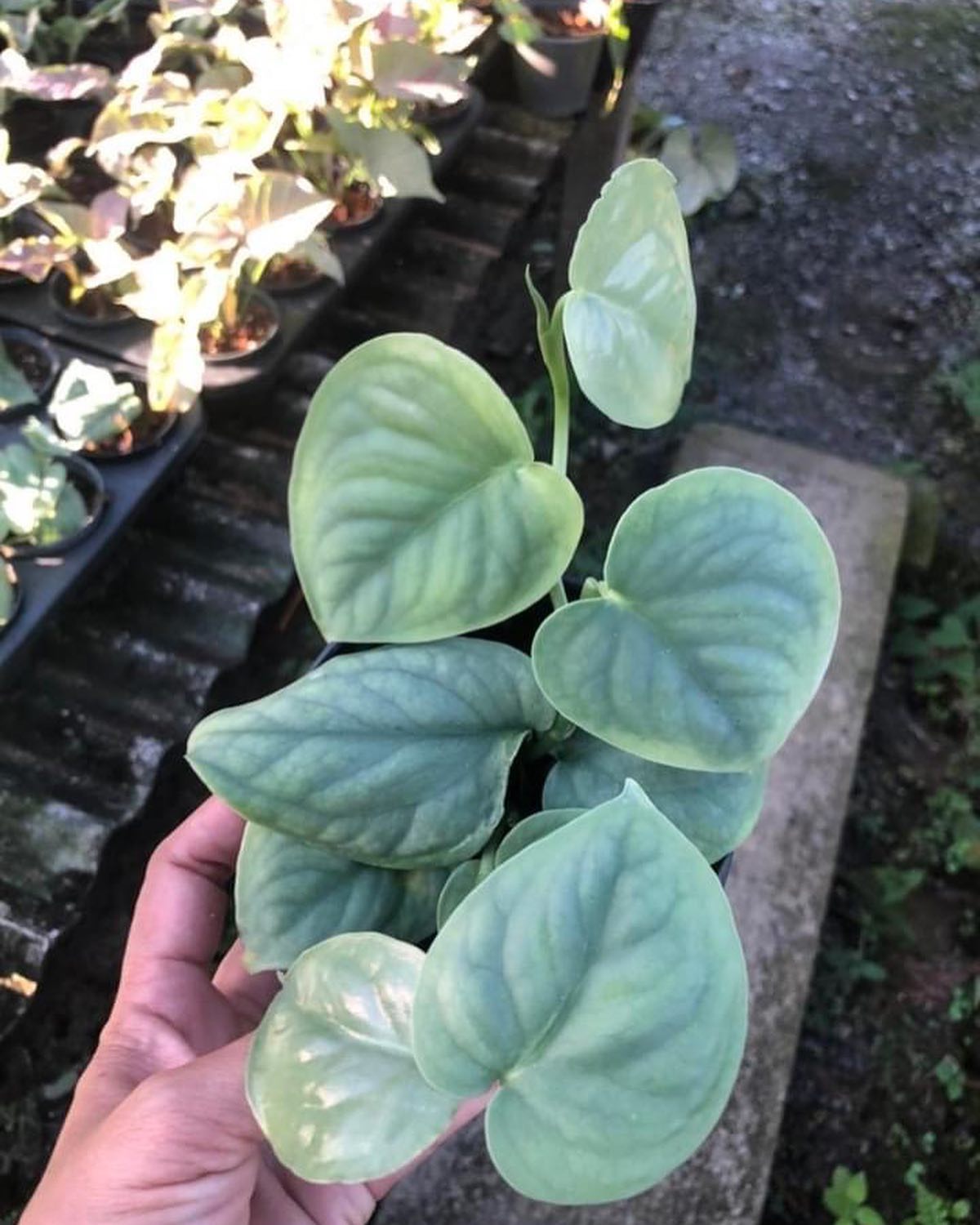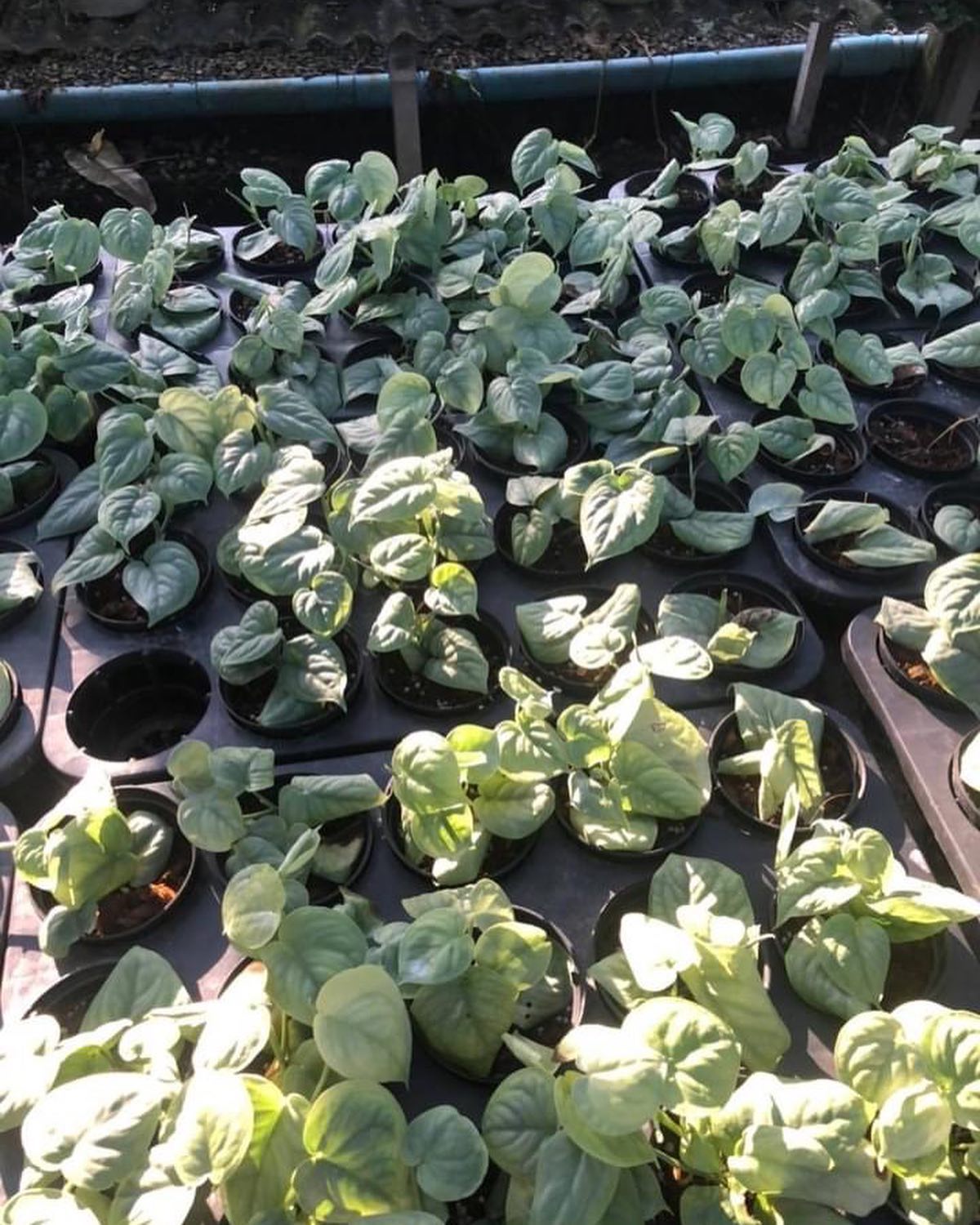How to Grow Scindapsus Lucens in 5 Easy Steps
The Scindapsus Lucens, also known as Silvery Ann or Scindapsus Pictus Argentius, is a gorgeous vining plant known for its heart-shaped silvery leaves. This tropical plant is gaining popularity for its lush foliage and trailing habit, making it an excellent option to decorate both indoor and outdoor spaces.
Growing Scindapsus Lucens is relatively easy as long as you provide the right care and conditions. In this blog post, I will share the five most important aspects of successfully growing this tropical vining plant in your home or garden.

The potting mix you use for your Scindapsus Lucens is crucial, as it must drain well yet retain some moisture. I recommend using a well-draining potting soil amended with:
Ingredients for Potting Mix
- Coconut coir or peat moss to help retain moisture
- Perlite or pumice to improve drainage
- Compost or worm castings to provide nutrients
Avoid heavy potting mixes, as Scindapsus Lucens plants are prone to root rot if overwatered.
Potting Tips
When repotting your plant, gently loosen the roots before placing it in a container only one or two sizes larger. Scindapsus Lucens prefers being slightly rootbound.
For more information on the ideal soil conditions and ingredients for Scindapsus, you might find "Scindapsus 101: A Beginner's Guide to Understanding and Growing" very useful.
Scindapsus Lucens thrives in bright, indirect light.
Ideal Light Conditions
Place your Scindapsus Lucens near an east, west, or north facing window where it will receive plenty bright, indirect sunlight. Avoid direct southern exposure, as this may scorch the leaves.
Signs of Light Problems
If your plant's leaves begin to lose their silvery luster or turn yellow, it likely needs more sunlight. On the other hand, leaves that scorch or brown indicate too much light. Adjust your Scindapsus Lucens to the proper lighting conditions accordingly.
Understanding the light requirements and how to manage them can be crucial for your plant's health. For a deeper understanding of these requirements, consider reading "How to Grow Scindapsus in 5 Easy Steps".

"Unleash the beauty of nature in your home with the Scindapsus Lucens! Click here to add this stunning plant to your collection today!"
Scindapsus Lucens is a tropical plant that thrives in average room temperatures between 60-80°F.
Coping With Temperature Changes
Avoid placing your Scindapsus Lucens near cold drafts from windows or doors during colder months. You can continue growing it outdoors during the summer if temperatures remain above 60°F at night.
If moving your plant in and out during different seasons, do so gradually over two weeks so it can adjust.
Scindapsus Lucens should be watered whenever the top inch or two of soil becomes dry.
Tips for Watering
Water thoroughly until it drains freely from the pot's bottom drainage holes, then allow the excess to drain away. This encourages healthier root development.
The plant's soil should not remain soggy or muddy, as this invites root rot. Allow the soil to mostly dry out between waterings.
Always water early in the day to prevent leaves remaining wet overnight, which can cause disease. If you're looking for more detailed information on the ideal temperature conditions and how to maintain them for Scindapsus plants, the insights in "Are you growing scindapsus at home? Find out its 5 secret advantages!" can be particularly helpful.

Scindapsus Lucens enjoys average household humidity levels between 40-60% but can tolerate much lower.
Boosting Humidity
Increase humidity around your plant by misting the leaves daily with water, using a pebble tray filled with water, or placing a humidifier nearby.
Avoid standing water directly on the leaves, as this encourages bacterial or fungal disease.
Feed Scindapsus Lucens monthly during the growing season with a balanced houseplant fertilizer, or use compost tea for an organic alternative.
Fertilizing Best Practices
Always dilute liquid fertilizers to half strength before applying them. Too much fertilizer may damage the plant's roots or leave salt deposits on the soil.
Thoroughly flush the soil monthly with water without fertilizer to prevent buildup. Discontinue fertilizing in winter when growth slows.
Following these important care guidelines of proper potting mix, lighting, ideal temperatures, adequate water, humidity, and fertilizer will lead to a healthy, thriving Scindapsus Lucens. This gorgeous trailing plant can create stunning displays indoors or out. With the right conditions, you'll enjoy its lush, silvery foliage for years to come.
- What is Scindapsus Lucens? Scindapsus Lucens is a tropical, evergreen plant known for its distinctive, heart-shaped leaves. It's a member of the Araceae family, often grown indoors for its decorative foliage that features a glossy texture and subtle variegation.
- How do you care for a Scindapsus Lucens? Scindapsus Lucens thrives in medium to low indirect light. It prefers well-draining soil and should be watered when the top inch of soil feels dry. Avoid overwatering to prevent root rot. This plant appreciates a humid environment and moderate temperatures.
- Can Scindapsus Lucens purify the air? Yes, like many indoor plants, Scindapsus Lucens is believed to have air-purifying qualities. It can help remove certain toxins from the air, making it a popular choice for improving indoor air quality.
- Is Scindapsus Lucens toxic to pets? Yes, Scindapsus Lucens is toxic if ingested by pets. It contains calcium oxalate crystals, which can cause irritation and swelling of the mouth, tongue, and throat if chewed or swallowed. It's advisable to keep this plant out of reach of pets.
- How fast does Scindapsus Lucens grow, and how should I propagate it? Scindapsus Lucens has a moderate growth rate. It can be propagated by stem cuttings placed in water or soil. To encourage fuller growth, regular pruning is recommended. The best time to propagate is during the growing season, usually in spring or early summer.
https://greenboog.com/grow-scindapsus-lucens-in-5-easy-steps/
Growing Scindapsus Lucens is relatively easy as long as you provide the right care and conditions. In this blog post, I will share the five most important aspects of successfully growing this tropical vining plant in your home or garden.

Selecting the Right Potting Mix
The potting mix you use for your Scindapsus Lucens is crucial, as it must drain well yet retain some moisture. I recommend using a well-draining potting soil amended with:
Ingredients for Potting Mix
- Coconut coir or peat moss to help retain moisture
- Perlite or pumice to improve drainage
- Compost or worm castings to provide nutrients
Avoid heavy potting mixes, as Scindapsus Lucens plants are prone to root rot if overwatered.
Potting Tips
When repotting your plant, gently loosen the roots before placing it in a container only one or two sizes larger. Scindapsus Lucens prefers being slightly rootbound.
For more information on the ideal soil conditions and ingredients for Scindapsus, you might find "Scindapsus 101: A Beginner's Guide to Understanding and Growing" very useful.
Providing the Right Light Conditions
Scindapsus Lucens thrives in bright, indirect light.
Ideal Light Conditions
Place your Scindapsus Lucens near an east, west, or north facing window where it will receive plenty bright, indirect sunlight. Avoid direct southern exposure, as this may scorch the leaves.
Signs of Light Problems
If your plant's leaves begin to lose their silvery luster or turn yellow, it likely needs more sunlight. On the other hand, leaves that scorch or brown indicate too much light. Adjust your Scindapsus Lucens to the proper lighting conditions accordingly.
Understanding the light requirements and how to manage them can be crucial for your plant's health. For a deeper understanding of these requirements, consider reading "How to Grow Scindapsus in 5 Easy Steps".

"Unleash the beauty of nature in your home with the Scindapsus Lucens! Click here to add this stunning plant to your collection today!"
Maintaining Ideal Temperatures
Scindapsus Lucens is a tropical plant that thrives in average room temperatures between 60-80°F.
Coping With Temperature Changes
Avoid placing your Scindapsus Lucens near cold drafts from windows or doors during colder months. You can continue growing it outdoors during the summer if temperatures remain above 60°F at night.
If moving your plant in and out during different seasons, do so gradually over two weeks so it can adjust.
Providing Adequate Water
Scindapsus Lucens should be watered whenever the top inch or two of soil becomes dry.
Tips for Watering
Water thoroughly until it drains freely from the pot's bottom drainage holes, then allow the excess to drain away. This encourages healthier root development.
The plant's soil should not remain soggy or muddy, as this invites root rot. Allow the soil to mostly dry out between waterings.
Always water early in the day to prevent leaves remaining wet overnight, which can cause disease. If you're looking for more detailed information on the ideal temperature conditions and how to maintain them for Scindapsus plants, the insights in "Are you growing scindapsus at home? Find out its 5 secret advantages!" can be particularly helpful.

Humidity Preferences
Scindapsus Lucens enjoys average household humidity levels between 40-60% but can tolerate much lower.
Boosting Humidity
Increase humidity around your plant by misting the leaves daily with water, using a pebble tray filled with water, or placing a humidifier nearby.
Avoid standing water directly on the leaves, as this encourages bacterial or fungal disease.
Fertilizer Requirements
Feed Scindapsus Lucens monthly during the growing season with a balanced houseplant fertilizer, or use compost tea for an organic alternative.
Fertilizing Best Practices
Always dilute liquid fertilizers to half strength before applying them. Too much fertilizer may damage the plant's roots or leave salt deposits on the soil.
Thoroughly flush the soil monthly with water without fertilizer to prevent buildup. Discontinue fertilizing in winter when growth slows.
Conclusion
Following these important care guidelines of proper potting mix, lighting, ideal temperatures, adequate water, humidity, and fertilizer will lead to a healthy, thriving Scindapsus Lucens. This gorgeous trailing plant can create stunning displays indoors or out. With the right conditions, you'll enjoy its lush, silvery foliage for years to come.
FAQ
- What is Scindapsus Lucens? Scindapsus Lucens is a tropical, evergreen plant known for its distinctive, heart-shaped leaves. It's a member of the Araceae family, often grown indoors for its decorative foliage that features a glossy texture and subtle variegation.
- How do you care for a Scindapsus Lucens? Scindapsus Lucens thrives in medium to low indirect light. It prefers well-draining soil and should be watered when the top inch of soil feels dry. Avoid overwatering to prevent root rot. This plant appreciates a humid environment and moderate temperatures.
- Can Scindapsus Lucens purify the air? Yes, like many indoor plants, Scindapsus Lucens is believed to have air-purifying qualities. It can help remove certain toxins from the air, making it a popular choice for improving indoor air quality.
- Is Scindapsus Lucens toxic to pets? Yes, Scindapsus Lucens is toxic if ingested by pets. It contains calcium oxalate crystals, which can cause irritation and swelling of the mouth, tongue, and throat if chewed or swallowed. It's advisable to keep this plant out of reach of pets.
- How fast does Scindapsus Lucens grow, and how should I propagate it? Scindapsus Lucens has a moderate growth rate. It can be propagated by stem cuttings placed in water or soil. To encourage fuller growth, regular pruning is recommended. The best time to propagate is during the growing season, usually in spring or early summer.
https://greenboog.com/grow-scindapsus-lucens-in-5-easy-steps/
Nhận xét
Đăng nhận xét